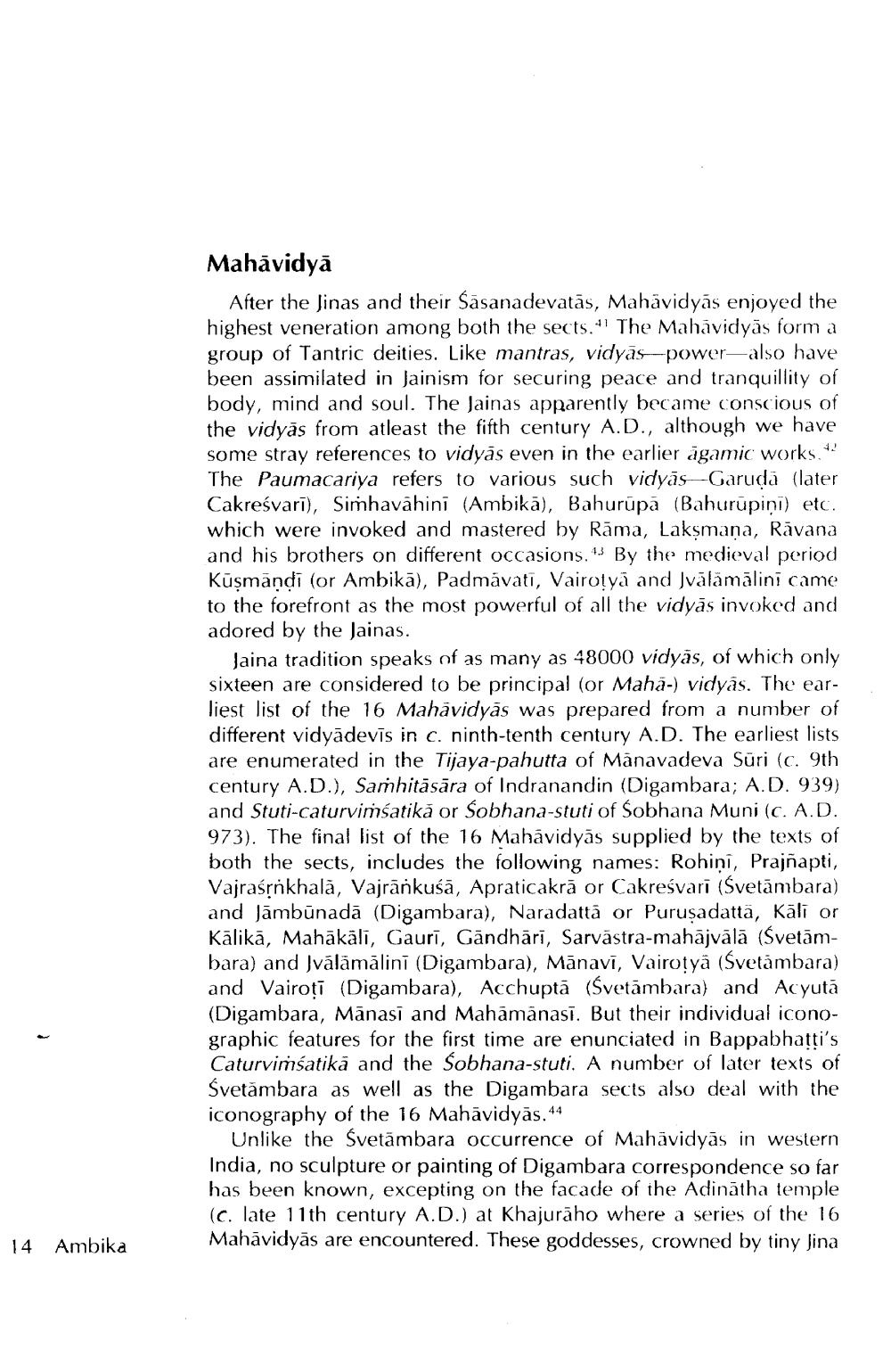________________
Mahāvidyā
After the Jinas and their Sasanadevatās, Mahāvidyās enjoyed the highest veneration among both the sects." The Mahāvidyās form a group of Tantric deities. Like mantras, vidyās-power-also have been assimilated in Jainism for securing peace and tranquillity of body, mind and soul. The Jainas apparently became conscious of the vidyās from atleast the fifth century A.D., although we have some stray references to vidyās even in the earlier ägamic works. 2 The Paumacariya refers to various such vidyās-Garudā (later Cakreśvarī), Simhavahini (Ambika), Bahurupā (Bahurupini) etc. which were invoked and mastered by Rāma, Laksmana, Rāvana and his brothers on different occasions. 4. By the medieval period Kūsmandi (or Ambika), Padmavati, Vairotyā and Jvālāmālini came to the forefront as the most powerful of all the vidyās invoked and adored by the Jainas.
Jaina tradition speaks of as many as 48000 vidyās, of which only sixteen are considered to be principal (or Maha-) vidyās. The earliest list of the 16 Mahavidyās was prepared from a number of different vidyādevis in c. ninth-tenth century A.D. The earliest lists are enumerated in the Tijaya-pahutta of Mānavadeva Suri (c. 9th century A.D.), Samhitāsāra of Indranandin (Digambara; A.D. 939) and Stuti-caturvimšatiká or Sobhana-stuti of Sobhana Muni (C. A.D. 973). The final list of the 16 Mahavidyās supplied by the texts of both the sects, includes the following names: Rohiņi, Prajñapti, Vajrasrnkhalā, Vajrankuśā, Apraticakrā or Cakreśvari (Svetāmbara) and Jāmbūnadā (Digambara), Naradattā or Purusadatta, Kāli or Kālikā, Mahākāli, Gauri, Gāndhāri, Sarvāstra-mahājvālā (Svetāmbara) and Jválämālini (Digambara), Mānavi, Vairotyä (Svetambara) and Vairoti (Digambara), Acchuptā (Svetāmbara) and Acyutā (Digambara, Mānasi and Mahāmānasī. But their individual iconographic features for the first time are enunciated in Bappabhatti's Caturvimśatikä and the Sobhana-stuti. A number of later texts of Śvetămbara as well as the Digambara sects also deal with the iconography of the 16 Mahavidyās. 44
Unlike the Svetāmbara occurrence of Mahāvidyās in western India, no sculpture or painting of Digambara correspondence so far has been known, excepting on the facade of the Adinātha temple (c. late 11th century A.D.) at Khajurāho where a series of the 16 Mahavidyās are encountered. These goddesses, crowned by tiny Jina
14 Ambika




